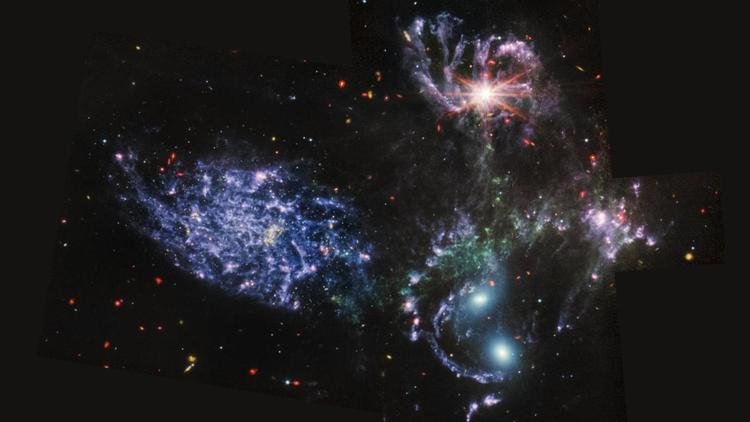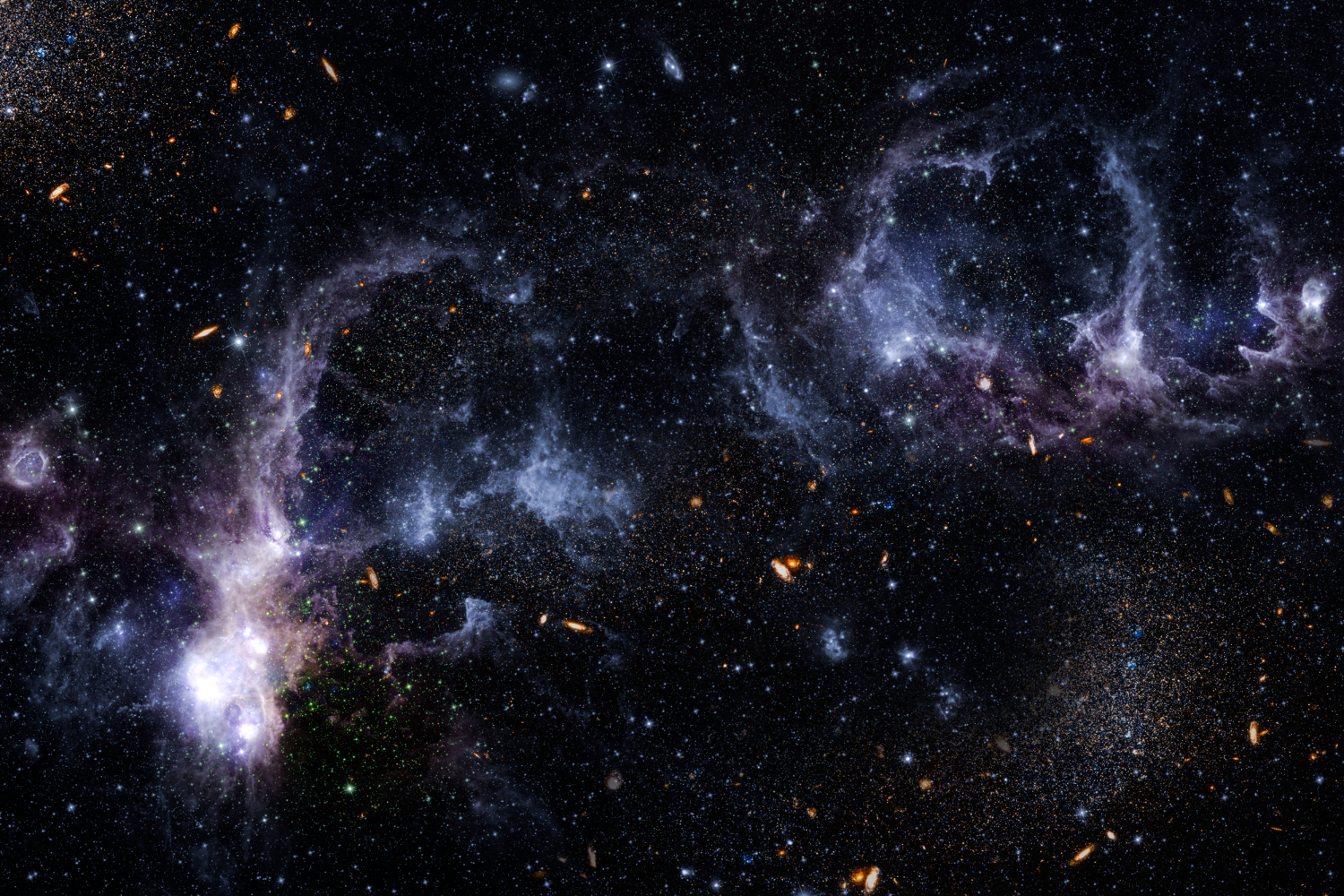The universe is vast and ever-expanding, pushing the boundaries of what we can observe and comprehend. Scientists have long wondered what lies at the edge of the universe—a place where space, time, and the very fabric of reality may behave in ways we cannot yet fully understand. Exploring the universe expansion, the limits of the observable universe, and the cosmic horizon mysteries helps us uncover the deepest secrets of the cosmos.
But what does it truly mean to reach the edge of the universe? Is there a physical boundary, or does space stretch infinitely? These questions have intrigued cosmologists for decades, and while we have gathered incredible insights, there is still much to learn.
In this article, we will discuss the nature of the universe’s expansion, the observable universe’s limits, and what might exist beyond the cosmic horizon. Could there be other universes? Does space extend infinitely? Join us as we journey to the outermost regions of existence.
The Expanding Universe: A Cosmic Growth Spurt

The Discovery of Universe Expansion
One of the most significant discoveries in modern astrophysics is that the universe is constantly expanding. In the 1920s, Edwin Hubble observed that distant galaxies were moving away from us, leading to the formulation of Hubble’s Law. This discovery provided strong evidence for the Big Bang Theory, which suggests that the universe originated from a singular point approximately 13.8 billion years ago.
Key observations supporting universe expansion:
- Redshift of galaxies: Light from distant galaxies shifts toward the red end of the spectrum, indicating they are moving away from us.
- Cosmic Microwave Background Radiation (CMB): Leftover radiation from the Big Bang provides clues about the universe’s early expansion.
- Dark energy and accelerated expansion: Observations of supernovae suggest that the universe’s expansion is speeding up due to an unknown force called dark energy.
- The Large-Scale Structure of the Universe: Galaxies are not randomly distributed but form vast cosmic webs, supporting the idea of continuous expansion.
The Observable Universe Limits
While the universe may be infinite, we can only observe a finite portion of it due to the speed of light and the age of the universe. The observable universe is defined by the cosmic light horizon, the maximum distance from which light has had time to reach us since the Big Bang.
Current estimates suggest the observable universe is about 93 billion light-years in diameter, even though the universe itself may be much larger or even infinite.
Factors influencing the observable universe:
- The speed of light: Since light takes time to travel, we see distant galaxies as they were billions of years ago.
- Cosmic expansion: While the universe has a finite age, its continuous expansion means we see galaxies farther away than expected.
- Relativity and space-time distortion: The expansion of space itself affects our perception of distant objects.
- The Horizon Problem: Some regions of the universe appear too similar in temperature and structure, leading to the theory of cosmic inflation, which suggests rapid expansion in the early moments of the universe.
The Cosmic Horizon Mysteries: What Lies Beyond?

The Cosmic Event Horizon
Even if we could travel at the speed of light, there are regions of the universe we will never be able to reach due to cosmic expansion. This boundary is known as the cosmic event horizon, which defines the limit beyond which galaxies are receding faster than light due to the stretching of space itself.
Mysteries of the cosmic horizon:
- Are there other universes? Some theories suggest our universe could be part of a vast multiverse.
- Is space infinite? While the observable universe has limits, the full extent of space remains unknown.
- What happens to galaxies beyond our reach? Over time, more galaxies will cross the event horizon and become undetectable.
- Is there a true edge to the universe? Some models propose that space-time could be curved, meaning traveling far enough in one direction might bring you back to your starting point.
The Fate of the Universe
Scientists propose several possible endings for our universe, depending on factors such as dark energy and matter density:
- Big Freeze (Heat Death): The universe expands indefinitely, becoming colder as stars burn out, eventually leading to a lifeless, dark cosmos.
- Big Crunch: Expansion eventually reverses, leading to a collapse back into a singularity, possibly resulting in another Big Bang.
- Big Rip: Dark energy continues accelerating expansion until galaxies, stars, and even atoms are torn apart, ending the universe in a state of complete fragmentation.
- Cosmic Rebirth (Big Bounce): Some theories suggest that after a Big Crunch, the universe could expand again in a cyclic process, creating an endless loop of expansion and contraction.
The Multiverse Hypothesis
One of the most exciting ideas in modern cosmology is the multiverse hypothesis—the idea that our universe is just one of many. This theory is supported by concepts in quantum mechanics, string theory, and cosmic inflation, which suggest that:
- Other universes may have completely different physical laws and dimensions.
- There could be bubble universes formed from different cosmic inflation events.
- Some parallel universes may be inaccessible but still influence our own.
The Role of Observatories and Future Research
Technological Advances in Cosmic Observation
As our understanding of the edge of the universe evolves, so do our tools for exploration. Some of the most advanced observatories helping us study the observable universe limits and cosmic horizon mysteries include:
- James Webb Space Telescope (JWST): Provides infrared observations of the early universe, revealing galaxies from the first few hundred million years after the Big Bang.
- Euclid Telescope: A European Space Agency mission focused on mapping dark matter and understanding cosmic acceleration.
- Square Kilometre Array (SKA): A massive radio telescope set to revolutionise our knowledge of cosmic expansion and early galaxy formation.
- Future Space Probes: Upcoming missions aim to refine our measurements of cosmic expansion and dark energy’s role in shaping the universe.
Exploring the Cosmic Edge: The Future of Universal Discovery
The edge of the universe is a concept filled with mystery and intrigue. From the observable universe limits to the cosmic horizon mysteries, our understanding of space continues to evolve. Scientists are working tirelessly to answer some of the most profound questions: Is space infinite? What happens beyond the cosmic horizon? Could other universes exist alongside our own?
As technology advances, telescopes like the James Webb Space Telescope, Euclid, and future cosmic observatories will provide new insights into the distant reaches of space. While we may never physically reach the edge of the universe, our quest for knowledge ensures we keep pushing the boundaries of what is possible.
What do you think lies beyond the observable universe? Share your thoughts in the comments below!


